james webb space telescope news
Latest from james webb space telescope
‘Are we ready for this?’: Wknd interviews the astrophysicist who captured signs
At 45, Nikku Madhusudhan has made the discovery of a lifetime. How did he know where to look? What else could these gas signatures be? An exclusive interview.

Updated on Apr 26, 2025 03:07 PM IST
Scientists find ‘strongest evidence’ yet of life beyond our solar system
Scientists using NASA's James Webb Telescope found signs of possible extraterrestrial life on exoplanet K2-18 b, detecting biosignature gases DMS and DMDS.

Published on Apr 18, 2025 06:52 AM IST
HT Correspondent, New Delhi
Scientists find strongest evidence yet of life on an alien planet
SPACE-EXPLORATION/PLANET (PIX, TV):Scientists find strongest evidence yet of life on an alien planet

Published on Apr 17, 2025 07:58 AM IST
Reuters |
‘City-killer’ asteroid 2024 YR4 no longer threat to Earth, but may hit moon
The asteroid 2024 YR4 has a 2% chance of hitting the moon in December 2032, a slight rise from NASA’s February estimate of 1.7%.
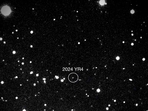
Published on Apr 03, 2025 05:09 PM IST
‘City-killer’ asteroid predictions clash amid added fears of Moon impact
Independent scientists are also weighing in on the onoing hot discussion about asteroid 2024 YR4, which has a little over 2% chance of hitting Earth in 2032.

Published on Feb 14, 2025 12:26 PM IST
Asteroid 2024 YR4 may hit Earth in 2032; know which nations are at risk
An asteroid known as 2024 YR4 has a 97.9% chance to safely pass the Earth in 2032, as per NASA scientists.

Updated on Feb 14, 2025 10:43 PM IST
NASA's rare ‘emergency’ tied to ‘city-killer’ asteroid's Earth collision in 2032
Here's how the world's space agencies are expected to deal with the ‘city-killer’ asteroid 2024 YR4's higher chance of hitting Earth in 2032.

Updated on Feb 12, 2025 07:03 PM IST
NASA's James Webb telescope to track asteroid as odds of hitting Earth rise
NASA's James Webb Space Telescope will study asteroid 2024 YR4, which has a 2 per cent risk of striking Earth in 2032, up from 1 per cent since its discovery.

Updated on Feb 11, 2025 02:10 PM IST
Astronomers discover new ‘Super-Venus’ exoplanet redefining planetary science
Astronomers discovered Enaiposha, a "Super-Venus" exoplanet 47 light-years away, with a thick atmosphere, challenging previous planetary classifications.

Published on Jan 27, 2025 11:59 AM IST
Mahipal Singh Chouhan
Cosmic dance of 'the Penguin and the Egg' galaxies caught by NASA's James Webb
NASA's Webb captured a striking view of a cosmic dance of a pair of interacting galaxies nicknamed “the Penguin and the Egg" to mark its 2nd anniversary.
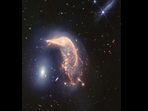
Updated on Jul 14, 2024 06:51 PM IST
In a first, NASA Webb Telescope captures jets of gas from newborn stars
The telescope captured jets of gas from newborn stars for the first time. A mesmerising image of this phenomenon was shared on Instagram.

Published on Jun 24, 2024 02:55 PM IST
Vrinda Jain
NASA's James Webb Space Telescope solves mystery of this puffy exoplanet
Data revealed that the interior of the exoplanet might be significantly hotter, and the core might be much more massive than what was estimated previously.

Updated on May 21, 2024 09:20 PM IST
Life in other worlds? Intriguing new possibilities emerge
If there is life on a planet or faraway moon, the signs would likely be in the mix of gases in its atmosphere

Updated on Sep 29, 2023 08:12 AM IST
Exciting findings, new ideas in hunt for alien life
The exoplanet K2-18b’s atmosphere has signatures of carbon dioxide, methane and possibly dimethyl sulphide, which is not known to exist where life does not.

Updated on Sep 29, 2023 12:58 PM IST
Life beyond Earth: NASA's Webb detects CO2 on surface of Jupiter's Moon Europa
NASA discovers carbon dioxide on Jupiter's moon Europa, suggesting its underground ocean may contain carbon, an essential element for life.

Published on Sep 22, 2023 03:41 PM IST
Telescope shares stunning ‘String of Pearls’ of the closest supernova
James Webb Space Telescope captures stunning image of SN1987A supernova, offering new insights into its history and evolution.

Updated on Sep 01, 2023 12:25 AM IST
End stages of dying sun to actively forming stars: James Webb's recent captures
The near-infrared camera of the Webb telescope has recently sent a series of magnificent images depicting several cosmic activities. Let's find out.

Published on Aug 04, 2023 07:35 PM IST
Eureka moment ! Astronomers detect ‘water’ in a planetary system in the universe
Despite closeness to the star, the water vapours have likely survived due to dust shielding which protects it from the star's ultraviolet radiation.

Published on Jul 28, 2023 06:40 AM IST
Adarsh Kumar Gupta
‘I can’t get over these images,' Obama praises James Webb Space Telescope
Former President Barack Obama expressed his awe for the James Webb Space Telescope's images, which are igniting curiosity and wonder in a new generation.

Published on Jul 13, 2023 02:07 AM IST
Star is born! NASA celebrates James Webb's first anniversary with stunning image
The James Webb Space Telescope celebrates its first anniversary with a stunning image of a star being born revolutionizing our understanding of the cosmos

Published on Jul 12, 2023 09:25 PM IST
Paurush Omar
Webb Space Telescope discovers ‘most-distant supermassive black hole’ till date
The study conducted on CEERS 1019 revealed that it is remarkable not only for its ancient age but also for the relatively low weight of its black hole.

Published on Jul 07, 2023 08:08 PM IST
'You're looking at more than 45,000 galaxies': NASA posts pic
The image of more than 45,000 galaxies was taken as part of the JWST Advanced Deep Extragalactic Survey. The image has left many people stunned.

Published on Jun 06, 2023 03:56 PM IST
Vrinda Jain
‘Celestial monsters’: James Webb Space Telescope on detecting supermassive stars
The largest stars observed until now have a mass of around 300 times that of our Sun. The star described in a study has an estimated mass of 5,000-10,000 Suns.
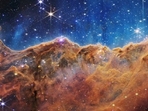
Published on May 17, 2023 05:07 PM IST
AFP |
Webb telescope spots three debris belts around luminous star Fomalhaut
Fomalhaut, one of the brightest stars in our night sky and the brightest in the southern constellation Piscis Austrinus, is located 25 light years from Earth.

Published on May 09, 2023 12:16 PM IST
Reuters |
Webb Telescope captures star's dying moments just before Supernova
Nasa's James Webb Space Telescope has captured a detailed Wolf-Rayet phase of a star before it ends into supernova. The star is located 15,000 light-years away in the constellation Sagitta.

Published on Mar 16, 2023 05:13 PM IST
Stunning image of galaxy mergers captured by COSMOS-Web will wow you
COSMOS-Web, the James Webb Space Telescope's largest project, shared images of spiral galaxies, gravitational lensing, and evidence of galaxy mergers.

Published on Mar 12, 2023 12:42 PM IST
Vrinda Jain
Smallest main belt asteroid detected by James Webb telescope
The asteroid measuring between 300 and 650 feet (100 to 200 meters) in length is the smallest object observed to date using the telescope, the US space agency NASA said Monday.

Published on Feb 07, 2023 12:20 PM IST
AFP | | Posted by Shobhit Gupta
5G, Artemis mission to Musk's Twitter takeover: Top 5 moments from sci-tech
In this year-ender, we have selected five defining moments in science and technology in 2022. These events not only alter our perceptions and understanding of the world, but they will also have a long-term impact on our lives in the coming years.
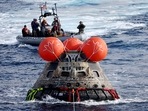
Published on Dec 24, 2022 12:25 PM IST
Singh Rahul Sunilkumar | Edited by Aniruddha Dhar
Webb telescope spies hidden stars in stellar graveyard
The Southern Ring Nebula, which is in the Milky Way around 2,000 light years from Earth, had previously been thought to contain two stars.
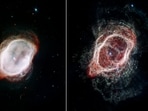
Published on Dec 08, 2022 11:51 PM IST
AFP |
NASA’s James Webb captures stunning photos of Pillars of Creation | 5 points
An active star-forming region within ‘Eagle Nebula’, these pillars are made of molecular hydrogen gas and dust and were first captured in 1995 by the Hubble Space Telescope.

Published on Oct 20, 2022 01:09 PM IST
Nisha Anand | Edited by Poulomi Ghosh
- 1
- 2
- ...





